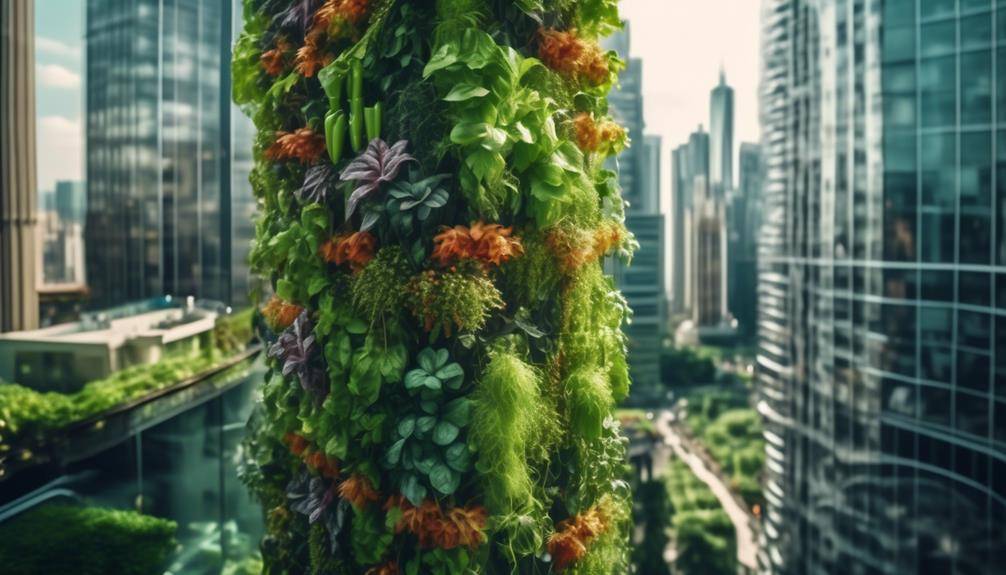How To: Aquaponics Systems For Small-Scale Farming

Did you know that aquaponics systems provide an innovative and sustainable solution for small-scale farming? With the growing interest in organic and locally-sourced produce, Aquaponics Systems For Small-Scale Farming offers a unique approach that combines aquaculture and hydroponics, allowing you to grow fish and plants in a mutually beneficial system. But how does it work, and what are the advantages of adopting this method? In this discussion, we will explore the benefits of aquaponics systems, provide guidance on getting started, and offer insights into the essential components, fish selection, plant choices, nutrient management, and troubleshooting common issues. Get ready to discover a new way to cultivate your own fresh and nutritious food while conserving resources and minimizing environmental impact.
Benefits of Aquaponics Systems
Aquaponics systems offer numerous benefits for small-scale farming operations, providing an efficient and sustainable method of cultivating both fish and plants in a symbiotic environment. One of the primary advantages of aquaponics for urban farming is the ability to produce a significant amount of food in a limited space. With vertical systems, plants can be grown in stacked layers, maximizing the use of vertical space. This makes aquaponics ideal for urban areas where land is scarce and expensive.
Another benefit of aquaponics is its economic advantages. By combining fish and plant cultivation, aquaponic systems can generate multiple streams of income. Fish can be sold for food, while plants can be sold as fresh produce or used for value-added products such as salads or herbal teas. Additionally, aquaponics requires fewer inputs compared to traditional farming methods. It eliminates the need for synthetic fertilizers and significantly reduces water usage. This leads to lower operating costs, making aquaponics a cost-effective and sustainable option for small-scale farmers.
Aquaponics also provides a year-round growing season. The controlled environment of an aquaponics system allows farmers to grow crops regardless of external weather conditions. This means a continuous supply of fresh produce, which is especially valuable in urban areas where access to fresh, locally grown food is limited.
Getting Started With Aquaponics
To begin your aquaponics journey, you need to understand the fundamental principles and components of an aquaponics system. Here are some essential tips to help you get started and avoid common mistakes:
- Choose the right location: Select a spot that receives ample sunlight and is easily accessible for maintenance. Avoid areas prone to extreme temperature fluctuations or strong winds.
- Build or purchase a suitable system: Decide whether you want to build your aquaponics system from scratch or purchase a pre-built one. Consider factors such as size, budget, and the types of plants and fish you wish to cultivate.
- Select the appropriate fish and plants: Research the compatibility of different fish species with your desired plants. Choose hardy fish species that can tolerate the conditions of your system, and select plants that thrive in aquaponic environments.
- Start small and scale up: It’s important to start with a small-scale system to gain experience and understanding before expanding. This allows you to learn the intricacies of aquaponics and make adjustments as needed.
- Monitor water quality: Regularly test and monitor the pH levels, ammonia, nitrite, and nitrate levels in your system. Maintaining proper water quality is crucial for the health of both fish and plants.
- Establish a balanced ecosystem: Remember that aquaponics is a symbiotic relationship between fish, plants, and bacteria. Aim for a balanced ecosystem where fish waste is efficiently converted into nutrients for plants, and plants help filter the water for the fish.
Essential Components of an Aquaponics System
The foundation of an efficient aquaponics system lies in its essential components. When setting up your aquaponics system, there are several key elements that you need to consider. These components work together to create a balanced and sustainable environment for both the fish and the plants.
The first essential component is the fish tank. This is where your fish will live and produce waste, which will serve as a nutrient source for the plants. The size of the fish tank will depend on the scale of your system and the number of fish you plan to raise. It is important to choose a tank that is large enough to accommodate the fish comfortably and allow for proper waste removal.
Next, you will need a grow bed. This is where your plants will grow and receive the nutrients from the fish waste. The grow bed can be filled with a variety of growing media, such as gravel, clay pebbles, or coconut coir. The choice of growing media will depend on the type of plants you plan to grow and the availability in your area.
In addition to the fish tank and grow bed, you will need a water pump and a water filtration system. The water pump is responsible for circulating the water between the fish tank and the grow bed, ensuring that the plants receive the necessary nutrients. The water filtration system, on the other hand, helps to remove any solids or excess nutrients from the water, keeping it clean and suitable for the fish and plants.
Choosing the Right Fish for Your Aquaponics System
Now that you have established the essential components of your aquaponics system, it is time to focus on selecting the appropriate fish species to thrive in your system. The fish you choose will play a vital role in the success of your aquaponics system, as they will provide the nutrients needed for your plants to grow. It is important to consider fish selection and fish compatibility to ensure a balanced ecosystem within your system.
When it comes to fish selection, there are a few factors to consider:
- Water temperature requirements: Different fish species have different temperature preferences. It is crucial to choose fish that can tolerate the temperature range of your aquaponics system.
- Growth rate: Some fish species grow faster than others. If you are looking for a quick turnaround time for harvesting, consider selecting a fast-growing fish species.
- Size: Take into account the size of the fish species you are considering. Some fish may outgrow your system, leading to overcrowding and potential problems.
In addition to fish selection, it is important to consider fish compatibility within your aquaponics system. Some fish species may not get along well with others and may exhibit aggressive behavior. It is essential to choose fish that can coexist peacefully in your system to maintain a harmonious environment.
Selecting Suitable Plants for Aquaponics
When selecting plants for your aquaponics system, there are a few key factors to consider. First, it is important to choose plants that are well-suited for the aquaponic environment, as some may not thrive in this unique system. Additionally, ideal aquaponic crops include leafy greens, herbs, and certain fruiting plants, which can all grow well with the nutrient-rich water provided by the fish waste. By selecting the best plants for growth in your aquaponics system, you can ensure a successful and productive harvest.
Plant Selection Tips
To ensure optimal growth and productivity in your aquaponics system, careful selection of suitable plants is essential. When choosing plants for your aquaponics system, consider the following tips:
- Select hydroponic plants: Hydroponic plants are ideal for aquaponics because they thrive in water-based environments. These plants have adapted to grow without soil and can absorb nutrients directly from the water.
- Consider vertical farming: Vertical farming allows you to maximize space in your aquaponics system. Choose plants that can grow vertically, such as lettuce, strawberries, or herbs. These plants have shallow root systems and can be stacked to optimize space.
- Choose fast-growing plants: Opt for plants that have a short growth cycle and high yield. This will ensure a continuous harvest and maximum productivity in your aquaponics system.
Ideal Aquaponic Crops
To ensure optimal growth and productivity in your aquaponics system, it is crucial to carefully select suitable plants for aquaponics, considering their adaptability to water-based environments, vertical growth potential, and fast growth cycles. Crop selection plays a vital role in yield optimization and overall system performance. When choosing plants for your aquaponics system, it is important to consider their ability to thrive in a water-based environment.
Some ideal aquaponic crops include leafy greens like lettuce, spinach, and kale, as they have high adaptability to water and can grow well with minimal root space. Additionally, fast-growing crops such as herbs like basil and mint, or fruiting plants like tomatoes and peppers, can maximize yield and provide a more diverse harvest. Remember to research and select crops that suit your specific aquaponics setup to ensure successful cultivation.
Best Plants for Growth
Suitable plants for aquaponics systems can be chosen based on their growth potential and adaptability to water-based environments. When selecting plants for your aquaponics system, it is essential to consider the best plants for beginners as well as advanced plant selection techniques. Here are three sub-lists to guide you in choosing the right plants for optimal growth in your aquaponics system:
- Beginner-friendly plants:
- Lettuce: Fast-growing and adaptable to various water conditions.
- Basil: Thrives in water-based environments and adds flavor to your dishes.
- Swiss chard: Resilient and provides a continuous harvest.
- Advanced plant selection techniques:
- Tomatoes: Require more nutrients but can be grown successfully with proper care.
- Strawberries: Benefit from the symbiotic relationship with fish and thrive in aquaponics systems.
- Cucumbers: Can be trained to grow vertically, maximizing space utilization.
Maintaining Water Quality in Aquaponics
To maintain optimal water quality in your aquaponics system, it is crucial to regularly test the water using reliable methods such as pH meters and test kits. These tests will help you monitor the levels of ammonia, nitrites, and nitrates, ensuring they remain within the appropriate range for fish and plant health. In addition to testing, nutrient balancing techniques such as adjusting the feed ratio or adding supplemental nutrients may be necessary to maintain a stable and productive aquaponics system.
Water Testing Methods
In order to maintain optimal water quality in aquaponics systems, it is crucial to implement effective water testing methods. Monitoring the water quality regularly ensures a healthy environment for both the fish and plants in the system. To achieve this, several water quality testing techniques can be utilized, including:
- Water quality testing: Regularly test the water for parameters such as ammonia, nitrite, nitrate, dissolved oxygen, and alkalinity. These tests help assess the overall health and balance of the system.
- pH measurement techniques: pH is a crucial parameter to monitor in aquaponics. Use pH test kits or pH meters to measure the acidity or alkalinity of the water. Maintaining a stable pH level is essential for the well-being of the aquatic organisms.
Nutrient Balancing Techniques
Implementing effective nutrient balancing techniques is crucial for maintaining optimal water quality in aquaponics systems. Nutrient deficiency prevention is key to ensure healthy plant growth and fish development. One technique is to regularly monitor nutrient levels in the water and adjust accordingly. This can be done by testing the water for essential nutrients such as nitrogen, phosphorus, and potassium. If deficiencies are detected, organic fertilizer alternatives can be used to supplement the system. Organic fertilizers, such as compost or worm castings, provide a natural and sustainable source of nutrients for the plants. Additionally, maintaining a balanced fish-to-plant ratio is important to prevent nutrient imbalances. By following these nutrient balancing techniques, you can maintain a healthy and thriving aquaponics system.
Nutrient Management in Aquaponics
Proper management of nutrients is essential in aquaponics systems for small-scale farming. To optimize growth and ensure the overall health of your plants and fish, it is important to carefully manage the nutrient levels in your system. Here are three key aspects to consider when it comes to nutrient management in aquaponics:
- Balancing Nutrient Inputs:
- Managing nutrients starts with understanding the nutrient requirements of your plants and fish. This involves monitoring the pH level, nutrient concentrations, and temperature of the water.
- You should also consider the specific needs of different plant species and adjust the nutrient inputs accordingly. This can be achieved by controlling the type and amount of fish feed, as well as supplementing with additional nutrients if necessary.
- Regular water testing is crucial to ensure the nutrient levels are within optimal ranges. This will help you identify any deficiencies or excesses and take appropriate action to maintain a healthy balance.
- Nutrient Cycling and Recycling:
- In aquaponics, the waste produced by the fish provides nutrients for the plants. The plants, in turn, filter the water and remove excess nutrients, creating a closed-loop system.
- Maximizing nutrient cycling involves promoting the growth of beneficial bacteria that convert fish waste into forms that can be readily absorbed by plants. This can be achieved by maintaining proper aeration, providing suitable substrates for bacterial colonization, and avoiding the use of chemicals that may harm the bacteria.
- Avoiding Nutrient Imbalances:
- Nutrient imbalances can lead to stunted plant growth, fish health issues, and overall system instability. It is crucial to maintain a balance between macronutrients (such as nitrogen, phosphorus, and potassium) and micronutrients (such as iron, calcium, and magnesium).
- Regular monitoring and adjustment of nutrient levels, as well as the use of organic fertilizers or supplements when necessary, can help prevent imbalances and promote healthy growth.
Harvesting and Selling Your Aquaponic Produce
To ensure the profitability of your small-scale aquaponics farm, it is crucial to understand the process of harvesting and selling your aquaponic produce. Implementing effective selling strategies and conducting thorough market research are key components of a successful business venture.
When it comes to selling your aquaponic produce, it is important to consider various selling strategies that will maximize your profits. One strategy is to establish relationships with local restaurants, grocery stores, and farmers markets. These establishments often prioritize sourcing locally grown, fresh produce and are more likely to be interested in products from your aquaponics farm. Another strategy is to create a direct-to-consumer sales channel, such as setting up a farm stand or participating in community-supported agriculture (CSA) programs. This allows you to sell your produce directly to consumers, eliminating the need for intermediaries and potentially increasing your profit margins.
Before implementing any selling strategy, it is essential to conduct market research. This involves identifying your target market, understanding their preferences and demands, and assessing the competition. By understanding your target market, you can tailor your marketing and sales efforts to meet their specific needs. Additionally, researching the competition allows you to differentiate your aquaponic produce from others in the market, giving you a competitive edge.
Troubleshooting Common Issues in Aquaponics
One common issue that aquaponic farmers often encounter is the occurrence of nutrient deficiencies in their system. Nutrient deficiencies can lead to stunted growth, yellowing leaves, and poor overall plant health. To address this issue, there are several troubleshooting techniques you can employ:
- Check the pH Levels: Imbalances in pH can affect nutrient availability to plants. Use a pH testing kit to monitor the pH levels of your system. Adjusting the pH to the optimal range of 6.0-7.0 can help improve nutrient uptake.
- Evaluate Fish Feed: The type and quality of fish feed can impact the nutrient levels in your system. Ensure that you are providing a balanced and nutritionally complete feed for your fish. Consider consulting with a fish nutritionist to optimize the feed formulation.
- Monitor Water Quality: Poor water quality can also contribute to nutrient deficiencies. Regularly test the water for ammonia, nitrite, and nitrate levels. High ammonia or nitrite levels can indicate an issue with the biological filtration, while low nitrate levels may suggest inadequate nutrient cycling.
Success Stories From Small-Scale Aquaponic Farmers
Are you eager to learn from successful aquaponic farmers who have achieved remarkable results? In this section, we will share inspiring case studies and valuable lessons from pioneers in small-scale aquaponics. These success stories will provide you with practical insights and strategies that you can apply to your own aquaponic farming endeavors. Get ready to be inspired and gain valuable knowledge from those who have paved the way in the world of small-scale aquaponics.
Inspiring Case Studies
Several small-scale aquaponic farmers have achieved remarkable success, demonstrating the potential of aquaponics systems for sustainable and profitable farming. By implementing innovative techniques, these farmers have not only improved their yields but also reduced resource consumption and environmental impact. Here are some inspiring case study examples:
- Case Study 1: The Urban Oasis – Located in a densely populated urban area, this aquaponic farm utilizes vertical farming techniques to maximize space efficiency. By cultivating a wide variety of leafy greens and herbs, they supply fresh produce to local restaurants and markets, generating a steady income stream.
- Case Study 2: The Community Cooperative – This aquaponic farm collaborates with the local community to provide fresh produce and education on sustainable farming practices. By involving volunteers in the operation and donating a portion of their harvest to local food banks, they have become a valuable resource for the community.
- Case Study 3: The Off-Grid Innovators – In a remote location with limited access to resources, this aquaponic farm has implemented innovative techniques such as solar-powered water pumps and rainwater harvesting systems. This self-sufficient approach not only reduces costs but also minimizes their carbon footprint.
These case studies highlight the versatility and potential of aquaponics systems for small-scale farmers, inspiring others to explore this sustainable farming method.
Lessons From Pioneers
Having explored inspiring case studies of successful small-scale aquaponic farmers, we can now turn our attention to the valuable lessons and success stories they have to offer. These pioneers have paved the way for others to follow in their footsteps, and their experiences provide valuable insights for aspiring aquaponic farmers. One success story comes from John, a small-scale farmer who started with a small aquaponics system in his backyard.
Through trial and error, he learned the importance of water quality management and the delicate balance between fish and plant populations. Another case study involves Sarah, who successfully converted her traditional soil-based farm into an aquaponics system. She emphasized the need for careful planning and adapting farming practices to suit the specific requirements of the aquaponics system. These success stories highlight the lessons learned by these pioneers and serve as a guide for others venturing into small-scale aquaponic farming.
Aquaponics Systems For Small-Scale Farming; Frequently Asked Questions
Can Aquaponics Systems Be Used in Urban Environments?
Aquaponics systems can indeed be used in urban environments. They offer numerous benefits for urban food production, such as efficient space utilization and reduced water consumption. However, challenges like limited space and access to resources require innovative solutions.
What Is the Average Cost of Setting up a Small-Scale Aquaponics System?
On average, setting up a small-scale aquaponics system can cost around $5,000 to $10,000. While the initial investment may seem high, the benefits of reduced water usage and organic food production outweigh the challenges.
Are There Any Government Regulations or Permits Required to Operate an Aquaponics System?
Government regulations and permits are required to operate an aquaponics system. Make sure to comply with all necessary guidelines and obtain the required permits before setting up your system.
Can I Use Tap Water in My Aquaponics System, or Do I Need to Treat It?
You can use tap water in your aquaponics system, but it is recommended to treat it. Treating tap water removes any harmful chemicals or contaminants, ensuring the health and well-being of your plants and fish.
How Long Does It Take for Plants to Grow in an Aquaponics System Compared to Traditional Farming Methods?
In an aquaponics system, plants typically grow faster compared to traditional farming methods. This is due to the nutrient-rich water and the symbiotic relationship between fish and plants. Aquaponics also offers environmental sustainability by conserving water and reducing the need for pesticides.
Conclusion
In conclusion, aquaponics systems offer numerous benefits for small-scale farming. By combining aquaculture and hydroponics, these systems provide a sustainable and efficient way to cultivate both fish and plants. With the right components, fish selection, plant choices, and nutrient management, farmers can successfully harvest and sell their aquaponic produce. Troubleshooting common issues and learning from success stories of small-scale aquaponic farmers can further enhance the success of these systems. Overall, aquaponics presents a promising solution for sustainable farming practices.








